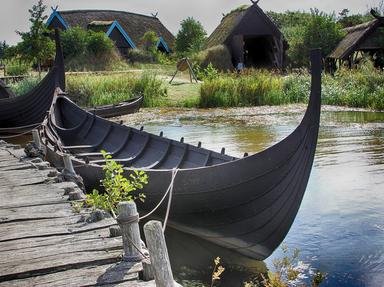Quiz Answer Key and Fun Facts
1. The etymology of the term "berserker" is still debated today. Some believe that it may derive from the fact that Berserkers went into battle without clothes.
2. There are some who believe the term "berserker" came from the animal pelt that was worn into battle. Which animal gave the Berserker the strength he needed to fight?
3. It is believed that Viking Berserkers belonged to a cult of one of their gods. With which Norse god were they associated?
4. Some Norse stories insinuate that Berserkers could shift-shape or at least acquire the qualities of which of the following animals?
5. What ability do Norse legends say a Berserker had in regards to the weapons of his opponents?
6. Many believe Berserkers fought "under the influence". Which of the following do historians believe they consumed before battle?
7. According to Norse sagas, there were usually twelve members in a band of Berserkers, and the name of their leader was often a form of a name that meant "bear". Which of the following could be the name of the Berserker leader?
8. What did a Berserker do to alter his physical appearance so as to further try and terrorize his opponent?
9. According to Norse sagas, how did a Berserker look when he went into battle?
10. It is believed that the Byzantine Emperor, Constantine VII, had a contingent of Norse Berserkers who served him. What was this group called?
Source: Author
ponycargirl
This quiz was reviewed by FunTrivia editor
bloomsby before going online.
Any errors found in FunTrivia content are routinely corrected through our feedback system.

